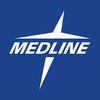Filter interviews by
SMC Corporation Interview Questions and Answers for Experienced
6 Interview questions
Two-stroke engines have a power stroke every revolution, while four-stroke engines have a power stroke every other revolution.
Two-stroke engines have a simpler design with fewer moving parts compared to four-stroke engines.
Two-stroke engines require a fuel-oil mixture for lubrication, while four-stroke engines have a separate oil system.
Two-stroke engines are lighter and have a higher power-to-weight ratio than fo...
SQTCM stands for Software Quality Testing and Control Management. It is a process that ensures software products meet quality standards.
SQTCM involves creating test plans and test cases to ensure software functionality meets requirements
It includes conducting various types of testing such as unit testing, integration testing, and system testing
SQTCM also involves tracking defects and issues found during testing an...
1st angle projection is commonly used in the United States, while 3rd angle projection is more commonly used in Europe and Asia.
1st angle projection places the object in the first quadrant, with the front view on the right and the top view on top.
3rd angle projection places the object in the third quadrant, with the front view on the left and the top view on top.
1st angle projection is commonly used in the United ...
Fabricator work involves creating, assembling, and repairing metal structures and components.
Fabricating metal parts using various tools and techniques
Assembling metal components to create structures
Repairing metal structures and components as needed
Reading and interpreting blueprints and technical drawings
Using welding, cutting, and shaping equipment
Ensuring quality and precision in all fabricated parts
Examples: ...
5S is a workplace organization method, Kaizen is continuous improvement, and Poka Yoke is error-proofing.
5S types refer to Sort, Set in order, Shine, Standardize, and Sustain for workplace organization.
Kaizen is a Japanese term for continuous improvement in processes and products.
Poka Yoke is a mistake-proofing technique to prevent errors in manufacturing processes.
Example: Implementing 5S in a factory to improve ...
Fabrication is the process of creating a product or component through various manufacturing methods.
Fabrication involves cutting, bending, welding, and assembling raw materials to create a final product.
Examples of fabrication processes include metal fabrication for creating structures like bridges, and plastic fabrication for making components like car bumpers.
Quality control is crucial in fabrication to ensure t...
SMC Corporation Interview Experiences for Experienced
12 interviews found
(2 Questions)
- Q1. About your last company products
- Q2. SMC product knowledge
(2 Questions)
- Q1. About notice period and package discussed
- Q2. Final discussion about joining
(2 Questions)
- Q1. What is different between for 1st angel and 3rd Angle ?
- Ans.
1st angle projection is commonly used in the United States, while 3rd angle projection is more commonly used in Europe and Asia.
1st angle projection places the object in the first quadrant, with the front view on the right and the top view on top.
3rd angle projection places the object in the third quadrant, with the front view on the left and the top view on top.
1st angle projection is commonly used in the United State...
- Q2. What is different between for 2 stoke engine and four stoke engine?
- Ans.
Two-stroke engines have a power stroke every revolution, while four-stroke engines have a power stroke every other revolution.
Two-stroke engines have a simpler design with fewer moving parts compared to four-stroke engines.
Two-stroke engines require a fuel-oil mixture for lubrication, while four-stroke engines have a separate oil system.
Two-stroke engines are lighter and have a higher power-to-weight ratio than four-st...
(2 Questions)
- Q1. What is 5s types,what is Kaizan,and pokayoke ?
- Ans.
5S is a workplace organization method, Kaizen is continuous improvement, and Poka Yoke is error-proofing.
5S types refer to Sort, Set in order, Shine, Standardize, and Sustain for workplace organization.
Kaizen is a Japanese term for continuous improvement in processes and products.
Poka Yoke is a mistake-proofing technique to prevent errors in manufacturing processes.
Example: Implementing 5S in a factory to improve effic...
- Q2. What is SQTCM ?
- Ans.
SQTCM stands for Software Quality Testing and Control Management. It is a process that ensures software products meet quality standards.
SQTCM involves creating test plans and test cases to ensure software functionality meets requirements
It includes conducting various types of testing such as unit testing, integration testing, and system testing
SQTCM also involves tracking defects and issues found during testing and ens...
(2 Questions)
- Q1. Discussion for salery acceptation?
- Q2. Discussion for responecibility and Job profile
I appeared for an interview in Sep 2024, where I was asked the following questions.
- Q1. All About EPCG
- Q2. All about Advance Authorization
(1 Question)
- Q1. Tell me about your self
- Ans.
Dynamic sales professional with a passion for building relationships and driving revenue growth through innovative strategies.
Over 5 years of experience in B2B sales, consistently exceeding targets by 20%.
Skilled in developing tailored sales pitches, leading to a 30% increase in client acquisition.
Strong background in CRM software, enhancing customer relationship management and follow-ups.
Proven ability to work collabo...
(1 Question)
- Q1. About last work experience
Interview Preparation Tips
(2 Questions)
- Q1. What is fabrication.
- Ans.
Fabrication is the process of creating a product or component through various manufacturing methods.
Fabrication involves cutting, bending, welding, and assembling raw materials to create a final product.
Examples of fabrication processes include metal fabrication for creating structures like bridges, and plastic fabrication for making components like car bumpers.
Quality control is crucial in fabrication to ensure the fi...
- Q2. Define Fabricator work.
- Ans.
Fabricator work involves creating, assembling, and repairing metal structures and components.
Fabricating metal parts using various tools and techniques
Assembling metal components to create structures
Repairing metal structures and components as needed
Reading and interpreting blueprints and technical drawings
Using welding, cutting, and shaping equipment
Ensuring quality and precision in all fabricated parts
Examples: weldi...
Interview Preparation Tips
I applied via Approached by Company and was interviewed before Dec 2022. There were 4 interview rounds.

(1 Question)
- Q1. Your qualifications and current company products related to SMC products range
(1 Question)
- Q1. Interview with Sales Head
(1 Question)
- Q1. Salary and experience related questions

(2 Questions)
- Q1. Tell me something about yourself
- Ans.
I am a recent graduate with a passion for learning and a strong work ethic.
I recently graduated with a degree in Computer Science
I have completed several internships in the tech industry
I am a quick learner and enjoy taking on new challenges
I am a team player and enjoy collaborating with others
I have strong communication skills and am able to explain complex ideas in simple terms
- Q2. What is your qualification
- Ans.
I have a Bachelor's degree in Computer Science.
I have completed a 4-year undergraduate program in Computer Science.
I have gained knowledge and skills in programming languages such as Java, Python, and C++.
I have also learned about database management, software engineering, and computer networks.
I have participated in various projects and internships to apply my knowledge in real-world scenarios.
Interview Preparation Tips
I appeared for an interview before Jun 2024, where I was asked the following questions.
- Q1. About pneumatics and hydraulics
- Q2. Electric actuators
Interview Preparation Tips
(1 Question)
- Q1. Last company products discussion or some technical discussion
(1 Question)
- Q1. General information about how to work in last company
(1 Question)
- Q1. Sales interview questions with GM
Interview Preparation Tips
I applied via Recruitment Consulltant and was interviewed before Feb 2023. There were 3 interview rounds.
Written test process is there
(2 Questions)
- Q1. About company products
- Q2. Related to company products
(1 Question)
- Q1. Final discussion on salary and joining
Top trending discussions






SMC Corporation Interview FAQs
The duration of SMC Corporation interview process can vary, but typically it takes about less than 2 weeks to complete.
Tell us how to improve this page.
SMC Corporation Interviews By Designations
- SMC Corporation Senior Sales Engineer Interview Questions
- SMC Corporation Junior Regional Sales Manager Interview Questions
- SMC Corporation Assistant Manager Interview Questions
- SMC Corporation Assistant Engineer Interview Questions
- SMC Corporation Engineer Interview Questions
- SMC Corporation Senior Engineer Interview Questions
- SMC Corporation Field Engineer Interview Questions
- SMC Corporation Data Analyst Interview Questions
- Show more
Interview Questions for Popular Designations
- Executive Interview Questions
- Associate Interview Questions
- Team Lead Interview Questions
- Software Developer Interview Questions
- Sales Executive Interview Questions
- Associate Software Engineer Interview Questions
- Java Developer Interview Questions
- Senior Software Engineer Interview Questions
- Show more
Overall Interview Experience Rating
based on 10 interview experiences
Difficulty level
Duration
Interview Questions from Similar Companies
SMC Corporation Reviews and Ratings
based on 278 reviews
Rating in categories
|
Junior Engineer
103
salaries
| ₹2.4 L/yr - ₹4.5 L/yr |
|
Senior Sales Engineer
99
salaries
| ₹6 L/yr - ₹11.9 L/yr |
|
Assistant Engineer
96
salaries
| ₹3.2 L/yr - ₹6.1 L/yr |
|
Junior Area Sales Manager
74
salaries
| ₹10.8 L/yr - ₹17.9 L/yr |
|
Junior Regional Sales Manager
47
salaries
| ₹12.6 L/yr - ₹21 L/yr |

Medtronic

Becton Dickinson

Alcon

Ben Franklin Opticians
- Home >
- Interviews >
- SMC Corporation Interview Questions >
- SMC Corporation Interview Questions for Experienced













